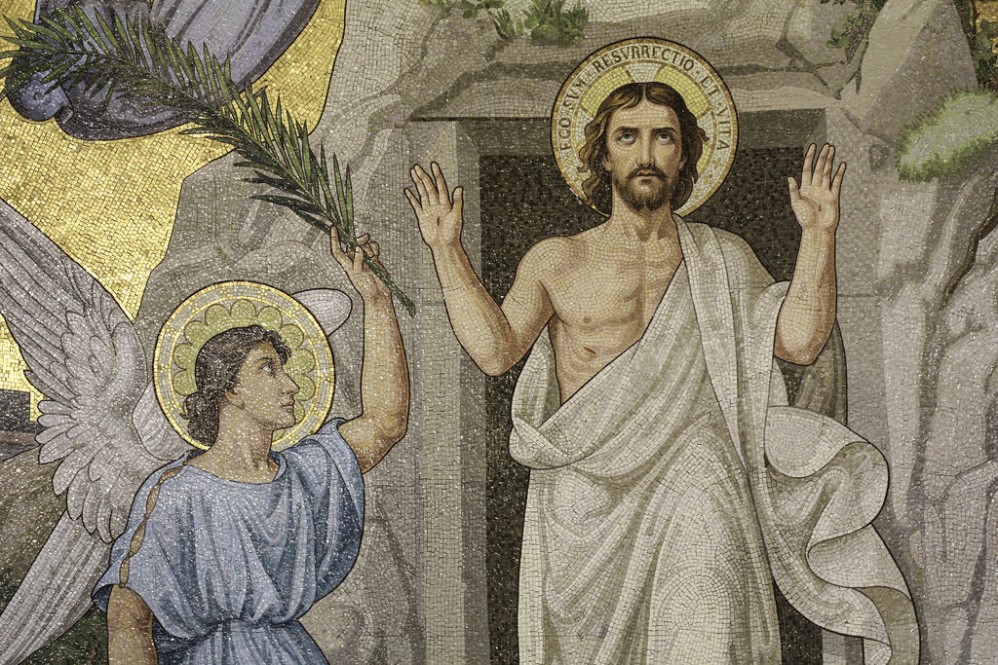The Mass as Emmaus
Easter Sunday
click here for readings
Alleluia! He is Risen! Happy Easter to all of you.
Easter is, without a doubt, the greatest feast on the Church’s calendar, even greater than the feast of the Nativity of the Lord at Christmas, celebrating the incarnation of God into history. The only thing greater than that moment, when the Creator entered into His creation, is when that same Creator God died, was buried, and rose from the dead to open for us the path to redemption. This is what Easter celebrates. God has broken the chains of death and shown us the way to eternal life. He has died for us so that we might rise with Him. Alleluia!
Being such a major feast, the Church puts before us an option of readings for today’s gospel. Depending on where you went to Mass you may have heard the priest or deacon reading from John 20:1-9, or Mark 16:1-7. Both recount the discovery of the empty tomb by Mary Magdalene, and her being the first messenger of the Resurrection to Peter and the disciples.
Or you may have heard from Luke 24:13-35, which recounts what happened to two disciples on the road to a place called Emmaus. I have always loved this story about how the Risen Jesus appeared to these disciples along the road and was made known to them in the breaking of the bread. But I learned something new about this story just recently — we don’t know where Emmaus is.
The gospel tells us that it is seven miles outside Jerusalem. But it’s not on any maps, modern or ancient. Archaeology hasn’t discovered it. It’s location is uncertain. Emmaus could be anywhere, and I think that’s fitting. It goes right along with the fact that only one of the disciples in this story is named — Cleopas. The other one could be anybody. And that means he could be you or me.
If you think about it, we have much more in common with these disciples on the road than we do with Mary Magdalene, Peter, or John. These named disciples were there at the crucifixion. They saw Jesus die. They saw the empty tomb. They heard the angel say, “He has been raised; he is not here” (Mk 16:6).
The disciples on the road, like you and I, are hearing about these things second hand. They are followers of Jesus. They had faith in Him. But think how that faith must have been tested, to hear of their Master and Teacher being arrested, tried, executed, and buried. And now they say His tomb is empty! Some say the body was stolen. Others are talking about resurrection. The gospel says that as they walked, “they were conversing about all the things that had occurred” (Lk 24:14). I’m sure they couldn’t talk about anything else.
While they walked and talked, a stranger appears to them and explains to them from the scriptures how all that has happened was foretold, how it was “necessary that the Christ should suffer these things and enter into His glory” (Lk 24:26). They ate supper with this stranger. “While he was with them at table, he took break, said the blessing, broke it, and gave it to them. With that their eyes were opened and they recognized Him” (Lk 24:30-31). Jesus was with them.
He has been with us since that day. He is with us now. If you have been to Mass, then you have been to Emmaus. What we see described in this account from Luke’s gospel is a liturgy.
First we have a Liturgy of the Word, the first part of the Mass when the scriptures are read and opened for us through the preaching of of a homily. This is why, though a lay person can be deputed to read the sacred scriptures in the assembly, only one who has been ordained in persona Christi (in the person of Christ) can preach. It is Jesus who opens the scriptures and causes our hearts to burn within us.
Then we have a Liturgy of the Eucharist, the second part of the Mass when the priest, again acting in persona Christi, takes bread, says the blessing using the sacred words given to us by Christ Himself at the Last Supper, breaks it, and gives it to us. What he gives us is no ordinary bread. What he gives is the very Body and Blood of our Lord.
Here, in the first resurrection account, Jesus is made known in the breaking of the bread (Lk 24:35). Nothing has changed since then. The tomb is still empty 2000 years later. Christ is still risen. His followers are still talking about the events of Holy Week. And Jesus still is appearing to us on the road to Emmaus, in the breaking open of the scriptures, and in the breaking of the bread.
This is why I am glad we don’t know where the historical Emmaus is located. It could be anywhere. That means it can be everywhere — everywhere the holy Mass is celebrated. If you want to encounter the living Jesus, you know where to find Him. He is on the road to Emmaus; a road we travel each and every Mass.

